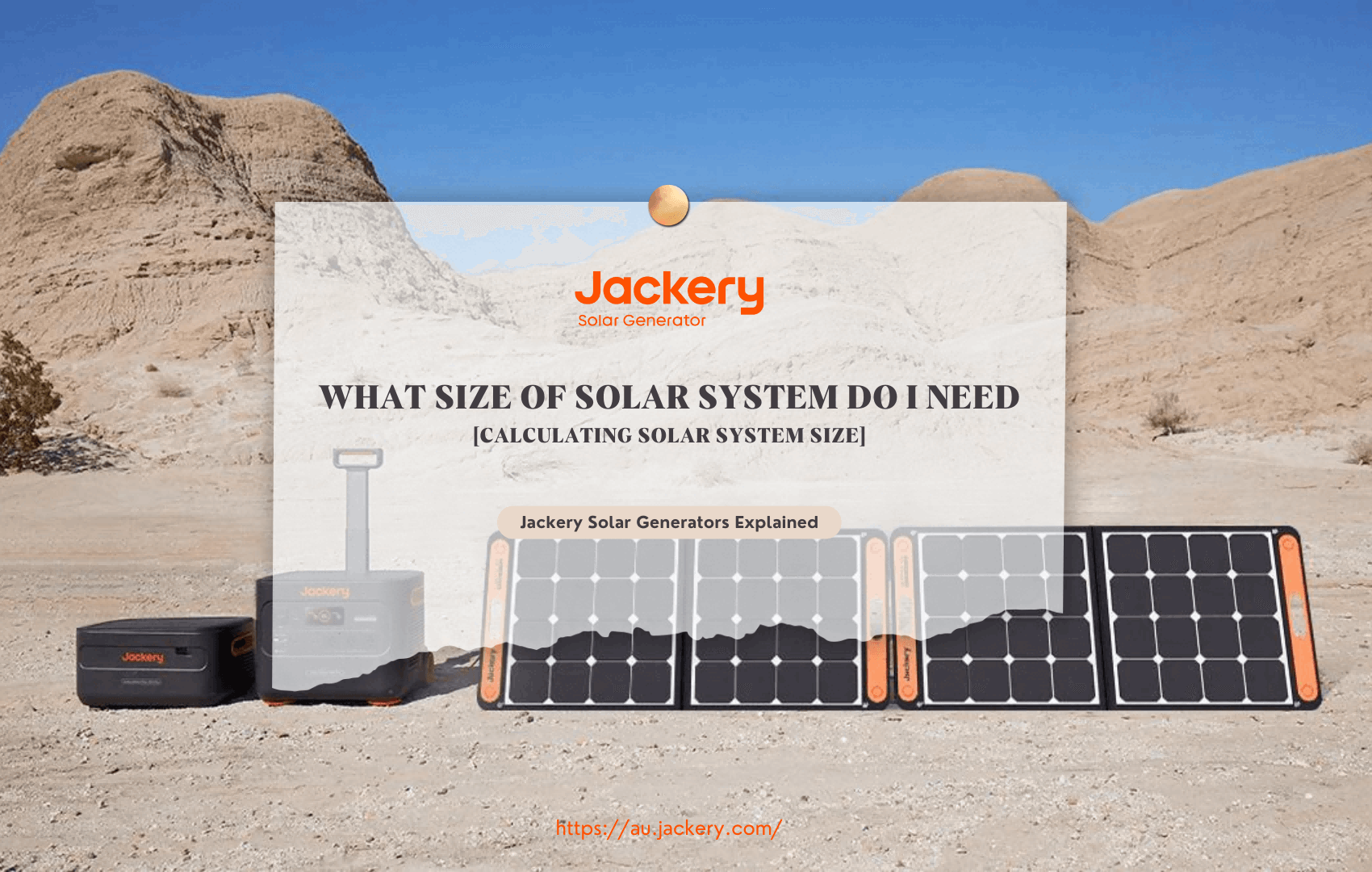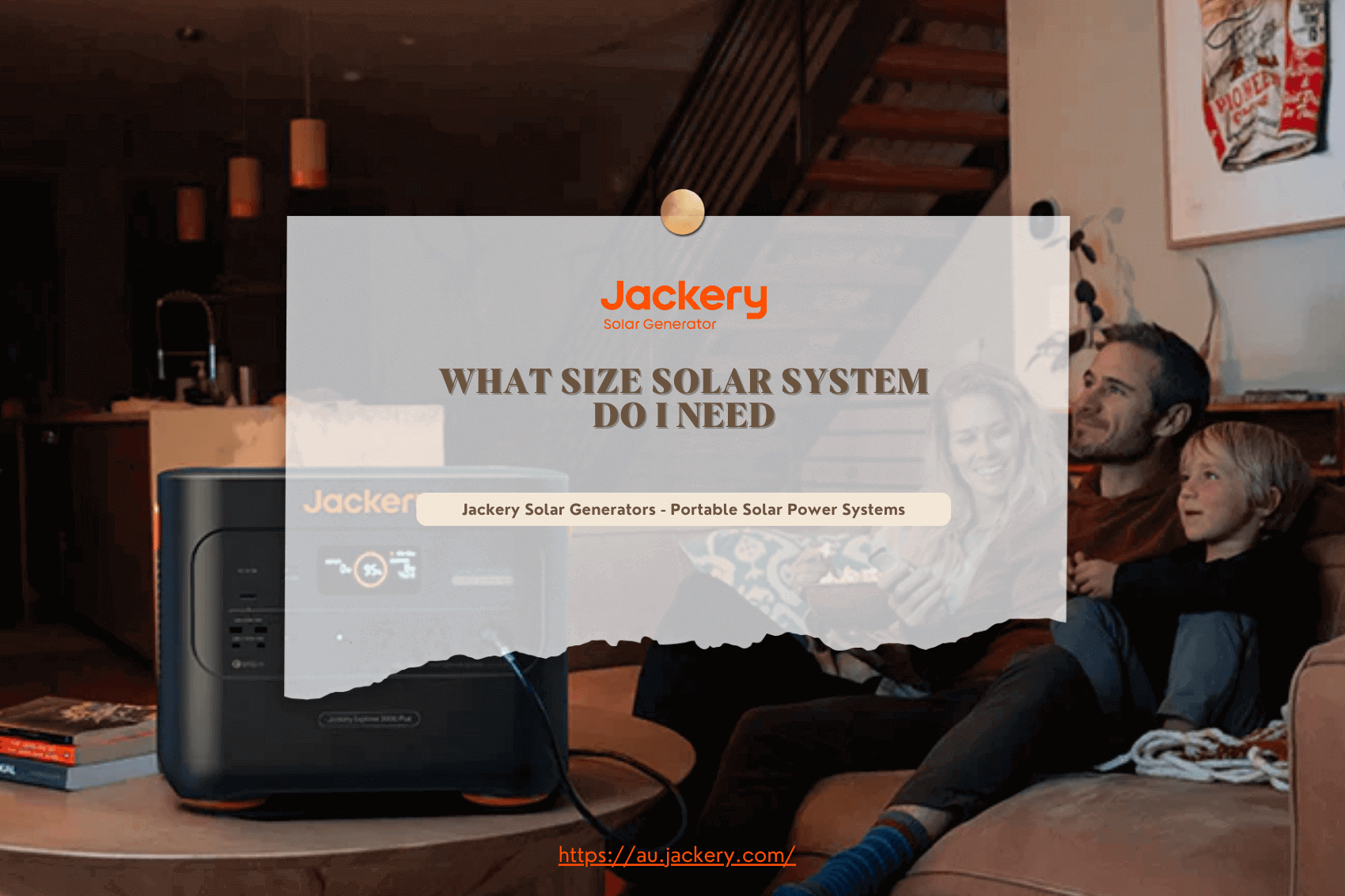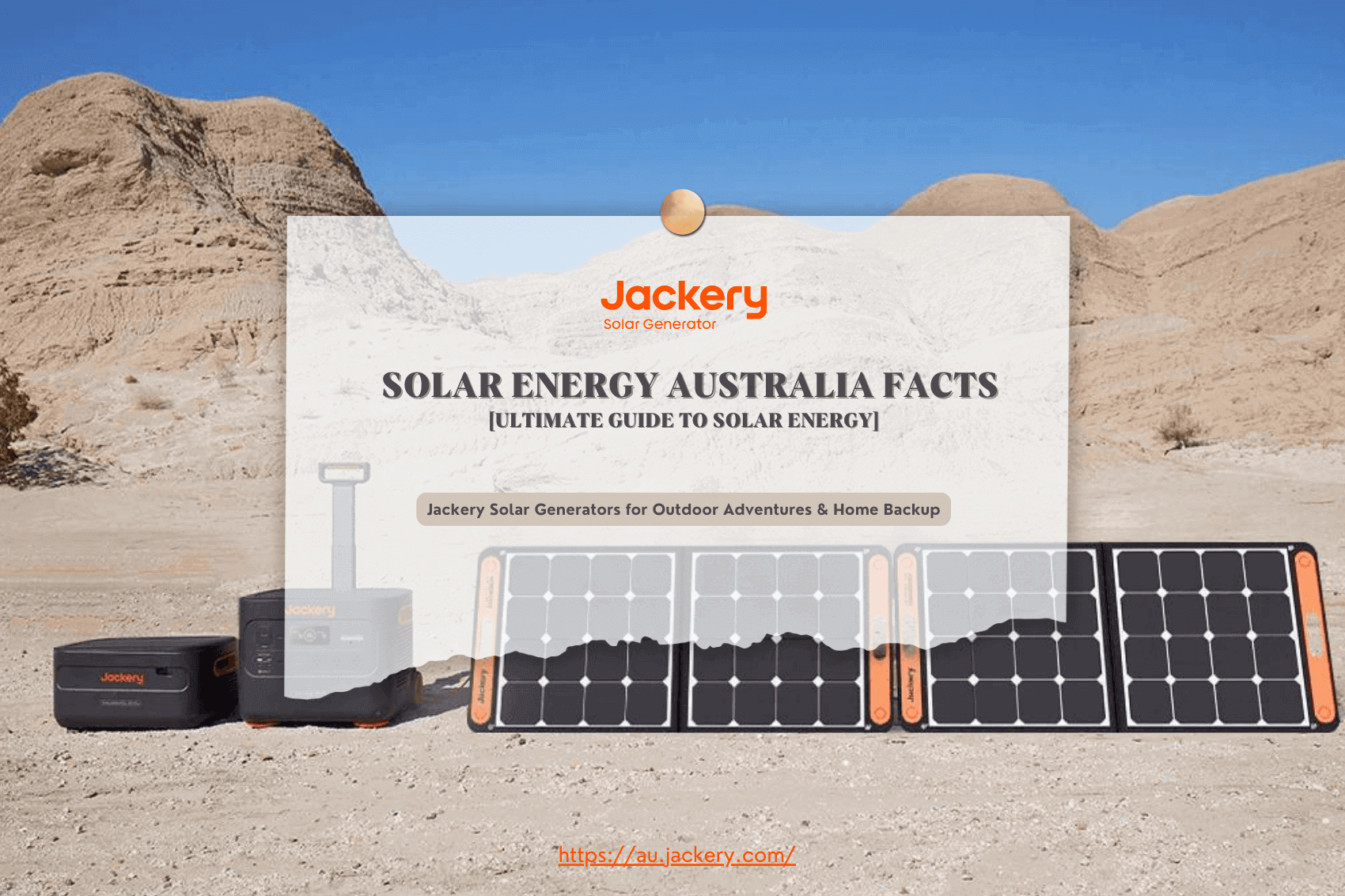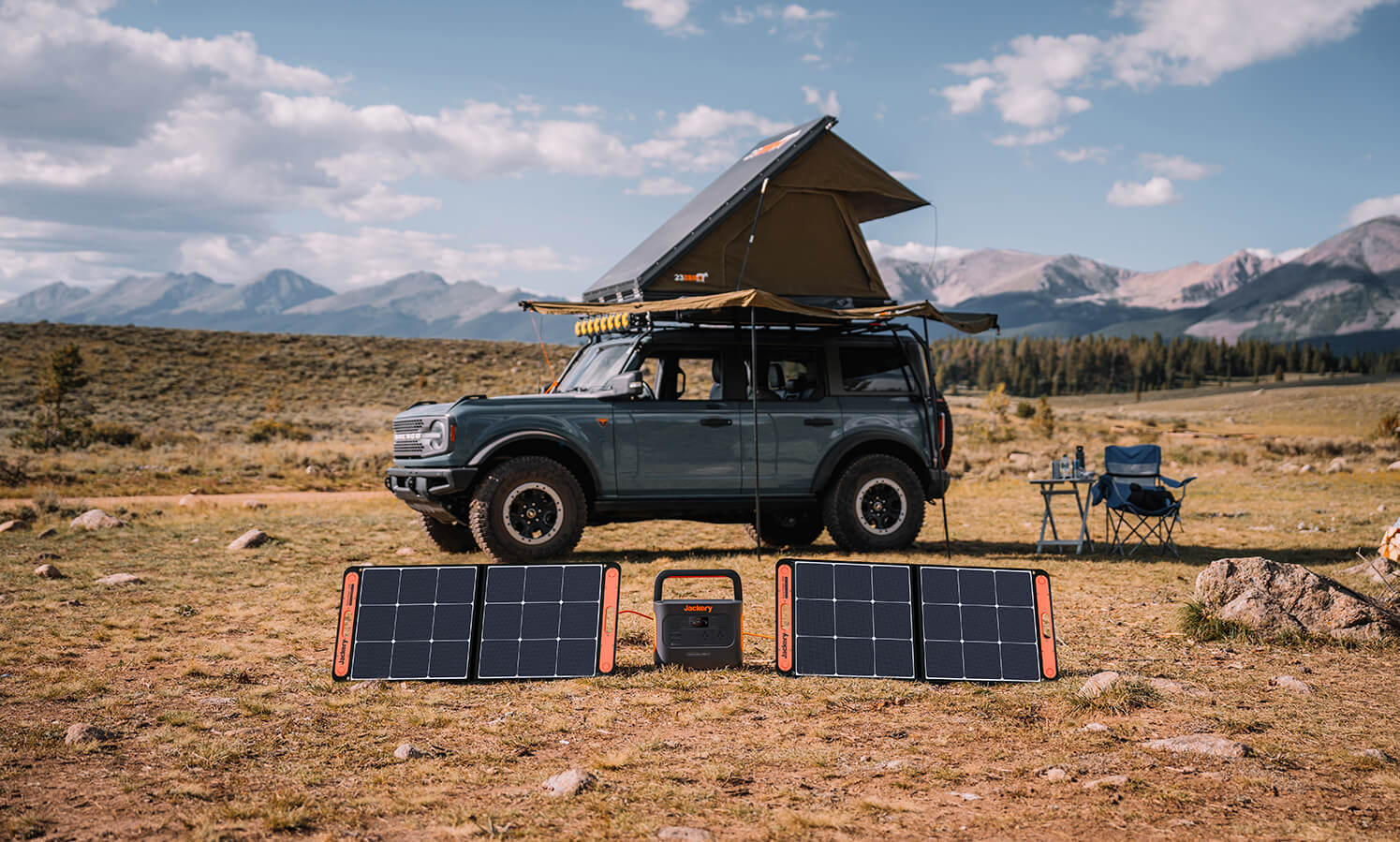|
Key Takeaways: |
|
• To calculate the size of your solar system, you should do the following steps: assess your power consumption, calculate kWh usage, check the peak sun hours, account for inefficiencies, calculate the size, and determine what size is right for you. • Many factors affect the size of a solar system, such as roof characteristics, solar battery storage, system losses, net metering program, and costs. • If you want to try solar products with a limited budget, you can choose Jackery Solar Generator, which is more cost-effective than rooftop solar. We recommend Jackery Solar Generator 2000 Plus and 1000 Pro for home use. • When choosing the solar system, consider the type of solar panels, output ratings, and the warranty. |
How to Calculate Solar System Size
In the last ten years, the Feed-in Tariff rates that energy companies pay for solar power sold back into the grid have decreased significantly. Because of this, a key design concept has come about that you should think about:
The best solar systems match how much energy the sun gives off with how much power the home needs during the day.
Calculating the size of a solar system specifically suited to your energy needs entails several meticulous steps to guarantee the system's maximum effectiveness. This complete guide will help you choose the correct size solar system for your needs:
Step 1: Assess Your Power Consumption
Starting point:
- Look at how much energy your home or business uses on a typical day or year.
- Think about how much power you use daily when demand is highest and how your energy needs change with the seasons.
- Look at your energy monitoring data and utility bills to get correct information on your energy usage.
Most people are at work or school during the day, so homes use the most energy in the mornings and nights. See the case below.

(Data Source: Solar Choice)
Key assumptions:
- Energy usage is 20kWh per day
- A solar system has been erected in Sydney with panels oriented towards the north at an inclination of 15 degrees.
- The average solar generation output is more significant during summer and lower during winter.
There are better situations for generating solar power while using little energy. In this case, the house uses 20kWh of electricity daily, and the 6kW system would help the owner save 40% on their electricity bills.
If the feed-in rate was 7c per kWh and the energy rate was 30c per kWh, this customer would save $3.56 per day or $1,300 per year.
The return on investment is better when solar panels are used during the day or when loads can be moved around. Significant energy users like pool pumps, water heaters, dryers, and washing machines might work better if they are set to run during the day.
Step 2: Calculate Your kWh Usage
Get the number of kilowatt-hours (kWh) used from your power bill. For a full year of usage, you'll need to see the highs and lows over a year. When your air conditioners and heaters are used often in the summer and winter, your energy use increases.
Find out how many kWh you usually use each month. To find out how much kWh you use on average each month, add up all of your kWh use over a year and split by 12. Your grid-tied system will probably make too much power in the summer when it gets the most sun.
Check how many kWh you use each day. To find out how many kWh you use daily, divide by 30.
To better understand how much energy your home uses, use our table of home products' power consumption to determine how many kWh your appliances would use each month. If your utility company has an excellent nett metering strategy, you can store the energy your system makes as a credit that you can use later.
|
Appliance |
Ampere |
Voltage |
Wattage |
|
Blender |
3A |
115V |
345W |
|
Dishwasher |
15A |
120V |
1800W |
|
TV |
2A |
120V |
240W |
|
Refrigerator |
6A |
120V |
720W |
|
Oven |
20A |
240V |
4800W |
|
Microwave |
7.5A |
120V |
900W |
|
LED Light |
1.25A |
120V |
150W |
|
Clothes Washer |
5-15A |
120V |
600-1800W |
|
Humidifier |
11.5A |
240V |
2760W |
Step 3: Check The Peak Sun Hours
Your solar panels only get sun sometimes. That doesn't mean you can't use sun power all the time. Instead, it means you aren't using sun power when it's not daylight.
Your screens take in, change, and store the sun's energy during the hours of the day when there is the most sunlight where you are. After that, your system can send that energy all day and night.
Here are the peak sun hours for where you live so you can figure out how much energy you produce. The good news is that Australia's tremendous land area has a wide range of peak sun hours. In short, here's what it all means:
- Northern Territories & Queensland: Enjoy the most sunshine, with peak sun hours exceeding 6 hours per day in summer.
- Western Australia: Receives around 5-6 peak sun hours in summer, dropping to 4-5 hours in winter.
- South Australia & New South Wales: Experience 4-5 peak sun hours in summer and 3-4 hours in winter.
- Victoria & Tasmania: Have the least sunshine, with peak sun hours around 3-4 hours in summer and 2-3 hours in winter.
Peak sun hours in Australia vary significantly across seasons.
- Summer (December-February): Expect the most extended peak sun hours, typically 6 to 8 hours daily.
- Autumn (March-May): Peak sun hours decrease slightly, averaging around 5 to 7 hours daily.
- Winter (June-August): The shortest peak sun hours occur, averaging 4 to 5 hours daily.
- Spring (September-November): Peak sun hours gradually increase, reaching 5 to 6 hours daily.
Step 4: Account for Inefficiencies
The output of solar panels depends on how big they are and how well they work. Solar panels can produce anywhere from 110 to 400 watts of electricity depending on how well they are built and how well they work. You need a certain amount of panels based on how much energy you can get from each one and how much you use.
After that, we need to add some extra money to account for the panels' inefficiency and rate of wear and tear.
Their performance guarantee says that solar panels' output goes down a little every year. If the performance promise on your solar panels is that they will work 80% of the time after 25 years, their degradation rate is 20%/25 years, which equals 0.8% production loss yearly. A 400W panel would only put out 320 watts when it reached the end of its useful life.
The solar panels are also tried in the best possible conditions: in a lab with controlled temperature and no obstructions. Solar panels sometimes work better in real life than in the lab. This means they sometimes produce less power than their wattage number says they should.
Step 5: Calculating The Solar System Size
To find out what size solar system you need split the energy you use each day (in kWh) by the number of hours of peak sunlight (in kW). Next, divide the kW output by the panel's efficiency to get an idea of how many solar panels you'll need for your setup.
Solar System Size = (Daily Power Consumption (kWh) / Average Sun Hours) x 1.15 Efficiency Factor
For example, if you live in Sydney and use 20 kWh of energy daily, there are six peak sunlight hours daily. The method tells you that you need 3.83 kW DC:
(20/6)*1.15= 3.83 kW
To be sure you need 3,800 watts of solar panels, multiply the number above by 1,000 to use the 3.83 kW DC setup as an example.
Step 6: Determine What Size is Best for You
A 6kW solar system is the best size for getting a good return on investment for 20kWh of power use in the morning and evening. The best size for the power used during the day is 6kW.
The ROI decreases as the system size decreases because it costs more per kW added. Systems less than 6kW are rarely implemented without little room on the roof.
|
System Size |
Install Cost |
Annual Savings |
Payback Period |
|
3kW |
$3,550 |
$820 |
5.2 Years |
|
4kW |
$4,020 |
$980 |
4.7 Years |
|
5kW |
$4,500 |
$1,020 |
4.7 Years |
|
6kW |
$4,800 |
$1,220 |
4.6 Years |
|
7kW |
$5,820 |
$1,380 |
4.8 Years |
|
10kW |
$8,200 |
$1,750 |
5 Years |
(Data Source: Energy Gov)
Ultimately, you need to know how much energy you need before you build your solar system and ensure you have enough panels to meet those needs. When you work with a solar power professional, you get the knowledge you need to make those decisions about your house.
Your ideal solar system should have the right amount and sizes of panels and an exemplary efficiency level so you can get the most out of the installation. This usually means high-efficiency panels, but you should never forget to choose the size and pattern to help you reach your process goals.
What Factors Affect The Size of Your Solar System?
Several factors will impact the dimensions and efficiency of your solar panel system:
- Roof Characteristics
Putting more solar panels on a roof with a more extensive surface area and facing the sun is usually possible. On the other hand, trees or other buildings that block the sun from the top may make less room for panels. Consider how your roof is oriented when figuring out how big your solar system should be.
- Solar Power Battery Storage
You must add a battery storage system to your solar system if you want it to work even when the sun isn't out. If the power goes out in your area, this battery will keep you going. Integrating a battery into your solar system will alter its power output and cost.
- System Losses
Any solar system can lose energy because of bad wiring, inefficient inverters, modules that don't match, and other technical issues. It would be best to think about these losses when figuring out how big your solar system needs to be because they can lower the energy it makes.
- Net Metering Program
Nett metering means that if a solar system makes more energy than it needs, it can be sent back into the power grid, and the owner of the solar system gets credit for it. This may affect how much solar energy you want and how big your solar system should be.
Contact your local energy company to learn more about their nett metering programme and how you can use it.
- Cost Considerations
Solar panels with better efficiencies usually cost more. The solar panels' extra power might be worth it for you. If your home has enough room for more solar panels that cost less, it might be wiser to go that way instead.
It would be best if you made sure that the way you go about installing solar panels fits your needs because they are a significant investment for your home.
A solar generator is a good option if you want to try solar energy but with a limited budget. It does the same things as a rooftop solar system. One of these solar products is the Jackery Solar Generator, which gives your home and outdoor tools stable power. Read on to find out more about the Jackery Solar Generator.
Jackery Solar Generators - Portable Solar Systems
Solar generators are a cheap option to traditional power sources that let people use solar energy without paying a lot for installations or utility bills every month. Users can get clean, renewable energy for much less money than it costs to get power from the grid if they buy a solar generator.

The best portable solar system is the Jackery Solar Generator, which combines Jackery Solar Panels with a Portable Power Station to turn sunlight into power.
The Jackery Portable Power Station has a high-quality lithium battery, an MPPT charge controller, and a pure sine wave inverter to ensure your phones, radios, lights, batteries, and other personal and household electronics have a stable and consistent power source.
Jackery Solar Generator 2000 Plus
Jackery's high-performance Solar Generator 2000 Plus substantially advances portable power options. Its massive capacity and high power output allow it to power standard vans for weeks, making it ideal for outdoor trips or home backup power supply. Incorporating battery cells into the Jackery Solar Generator 2000 Plus increases capacity from 2 kWh to 12 kWh, resulting in a paradigm shift in household backup power supply.
The Explorer 2000 Plus can deliver up to 3000W and has a 30% higher rated power than comparable 2 kWh models. Powered devices make up the vast majority of essential household appliances. Despite its regular use, the Solar Generator 2000 Plus can be fully charged in 6 hours (using 6* SolarSaga 100W solar panels). The power source becomes self-sufficient, charging from solar energy instead of the power grid.
The add-on battery pack can be charged with solar panels, providing additional flexibility while boosting charging efficiency and saving time. Jackery Solar Panels produce more lifetime energy due to their excellent solar conversion efficiency of up to 25%. Our solar panels produce 50% more electricity in low-light circumstances than traditional solar panels (PERC) and have a more robust spectrum response.

Jackery Solar Generator 1000 Pro
Combining SolarSaga 80W solar panels with the Explorer 1000 Pro portable power station, the Jackery Solar Generator 1000 Pro is an exceptionally quiet solar generator (as low as 46dB), has a lifespan of 10+ years, and can be ultimately charged in 1.8 hours. Its steady-powering dual 100W PD design ensures that all essential appliances are set during a power outage.
The rechargeable Explorer 1000 Pro power station has a capacity of 1002Wh, which enables it to supply power to 93% of appliances, including a television, CPAP machine, refrigerator, E-bike, and more.
Additionally, it features two 100W PD connectors and two USB-C ports, which provide consistent and rapid charging for devices such as smartphones, iPads, and laptops. The MPPT technology assures an efficiency of solar charging of 99%. The power station can be ultimately recharged in under 1.8 hours. In addition to solar recharge, wall and vehicle recharging methods are also supported.

What Size Solar Generator Do I Need?
To select the correct size solar generator for your needs, consider your energy demand, the efficiency of your solar panels, battery storage capacity, and the specific needs of your equipment. Choosing the right size solar generator involves balancing energy needs, setup efficiency, mobility, and cost.
Customers can select a Jackery Solar Generator with capacities ranging from 12 kWh to 300Wh for a portable solar system based on their energy requirements. The formula for estimating the operational hours of Jackery Solar Generator-powered appliances is as follows:
Working Hours (H) = [Jackery Solar Generator Capacity (Wh)*0.85] / Appliance's Wattage (W)
The Jackery Solar Generator 2000 Plus can power a 100W ceiling fan for 16 hours (2042.8Wh x 0.85/100). This calculation helps determine the hours when appliances can operate.
How to Choose The Best Solar System in Australia?
An efficient solar system from a reputable supplier has the potential to endure for several decades and yield substantial savings on energy expenses. On the other hand, panels from companies that care more about short-term profits than long-term success can leave you with a system that doesn't work well and won't last. When picking the best solar system for your home, you should think about the following things:

Choose The Right Type of Solar Panels
Sun panels come in two main types: monocrystalline and polycrystalline. The one you pick will affect how your system looks, how much it costs, how much electricity it makes, and how much room it takes up.
Most of the time, monocrystalline panels are better because they use less energy and have darker cells. Using more efficient panels, you can make more electricity with fewer panels, so your system takes up less room overall. There are some excellent things about monocrystalline panels, but they are usually more expensive.
Most of the time, polycrystalline panels are less efficient than monocrystalline panels, meaning you'd need a few more to make the same amount of energy. Of course, they usually cost less, and even though you'll need more panels, they'll probably be the cheaper choice.
Consider Output Rating & Efficiency
The panel's power depends on its output rate and how well it works.
The three-digit number in the name of the solar panel is its output rating. It tells you how many watts of electricity the panel will make in perfect circumstances.
Some panels are more than 400 watts, but most are between 250 and 400. A higher wattage may cost more because each panel will make more electricity. The lower number of cells you'll need to meet your generation goals won't compensate for the higher price.
But you should also pay attention to things other than power. It would be best to consider how well the panel works. This shows how much electricity it makes from the energy it gets from the sun.
Notice The Warranty
A strong warranty from the manufacturer is a good sign of the general quality of the panel. Many good solar panels come with warranties that last 25 to 30 years and can still work after the warranty.
You can buy lasting solar cells to ensure your system works well in the long run. You save more money when your solar panels work for a longer time. When you buy panels, ensuring they come with full insurance will help them work.
Calculating Solar System Size FAQs
The following are the most frequently asked questions about calculating the solar system size in Australia:
- 1. What size kWh solar system do I need?
The size of the kW solar system that is best for your home or business depends on your energy needs, your budget, and the amount of roof space you have. Most home solar systems are between 3 kW and 10 kW. Larger systems are better for homes that use a lot of energy or have a lot of roof space.
To find out how big your solar system is in kilowatts (kW), reduce the amount of energy you use each day (in kWh) by the number of peak sun hours where you live. Please remember that having a more extensive kW solar system may cost more upfront, but it can save you money and energy in the long run.
- 2. What size solar system do I need in Australia?
When deciding what size solar system you need in Australia, you should consider how much energy you use, where you live, the shape of your roof, and your budget. Australia gets a lot of sunlight, which makes it a great place to use solar energy. However, the size and effectiveness of your solar system can be affected by roof direction, shading, and how much energy your home uses.
Most home solar systems in Australia are between 3 kW and 10 kW. Larger systems are better for homes with much power or more extensive roofs. Talk to a reputable solar installer about your home's solar system size. They can determine your needs and tell you what size and setup work best.
- 3. Is a 6.6 kW solar system enough?
Whether or not a 6.6 kW solar system is right for you depends on your energy needs, where you live, the type of roof you have, and your budget. A 6.6 kW solar system is a medium-sized residential system that can make enough power to offset a big chunk of your energy use. This lowers your electricity bills and saves you money over time.
However, more than a 6.6 kW solar system might be needed depending on things like the angle of the roof, how much shade it gets, and the number of sunlight hours in your area. Talking to a skilled solar installer is essential to determine your energy needs and whether a 6.6 kW solar system will meet them.
Final Thoughts
It is suitable for the earth and the economy to switch to solar power. When you're ready to switch, you should be able to calculate the size of your solar system by carefully evaluating your energy needs. How you best gather and use solar energy depends on how much electricity you use, where you live, and how big your home is.
Working with a solar energy partner is better than going alone because you can get the information you need and install it safely, quickly, and effectively. The professionals at Jackery can help you figure out what goods you need and how to install them so you can use solar power without any extra energy.


























































